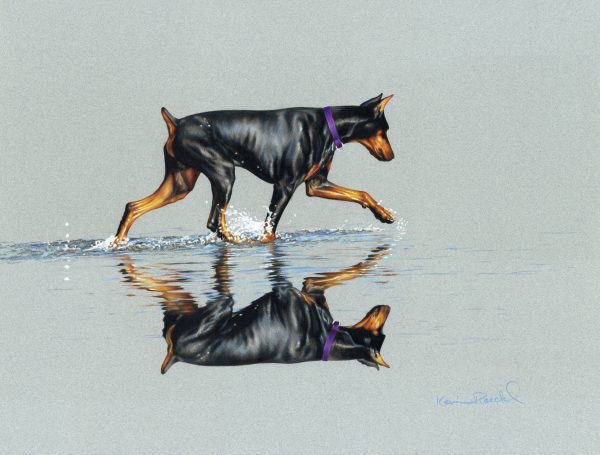
Some may find it a bit unsettling that the creator of one of our most beloved breeds occasionally worked as a skinner at the local slaughterhouse where, it was rumored, he helped dispatch and skin stray dogs and other animals. It was this work, however, that played into Louise Dobermann’s development of the dog with his name since there’s little doubt he recruited some of those strays into creating the Doberman Pinscher. We can’t be certain, however, because Dobermann never wrote anything down that pertained to his breeding program. Some historians have conjectured that the Thueringiapinscher was probably among those dogs because this type of dog was found in Dobermann’s home city, Apolda, where the dogs also known as “Schnupps” or “Bellings” were used by soldiers and police. In Ron Humphries and Joanna Walker’s book, The Doberman Pinscher, it’s written that these dogs were “sometimes loosely referred to as ‘Dobermann’s pinschers.'”
It was (and is) maddening for dog historians not to know with certainty what breeds figure in the Doberman’s ancestry.
in 1933, the German Dobermann Club interviewed Dobermann’s youngest son, Robert, as well as contemporaries of Louise Dobermann’s, to shed light on the issue. While historical references have suggested that a number of breeds went into the mix* the club concluded that the main “ingredient” in the Doberman Pinscher was the old German Pinscher.
*German Shorthaired Pointer, Weimaraner,Rottweiler, Deutsche Doggie, the old bob tailed German Shepherd, the Beauceron, the Greyhound, Manchester Terrier and black and tan German Pinscher.
Image: “Looking For Fish” by Kevin Roeckl was an entry in National Purebred Dog Day’s 2016 Fine Art/Poster competition. To see our 2018 winner, click here.
